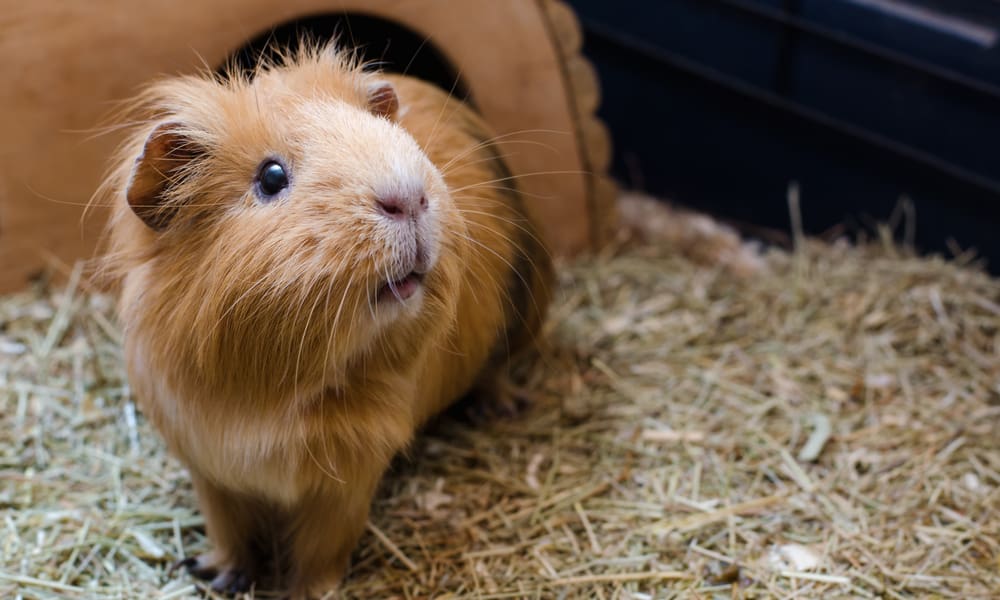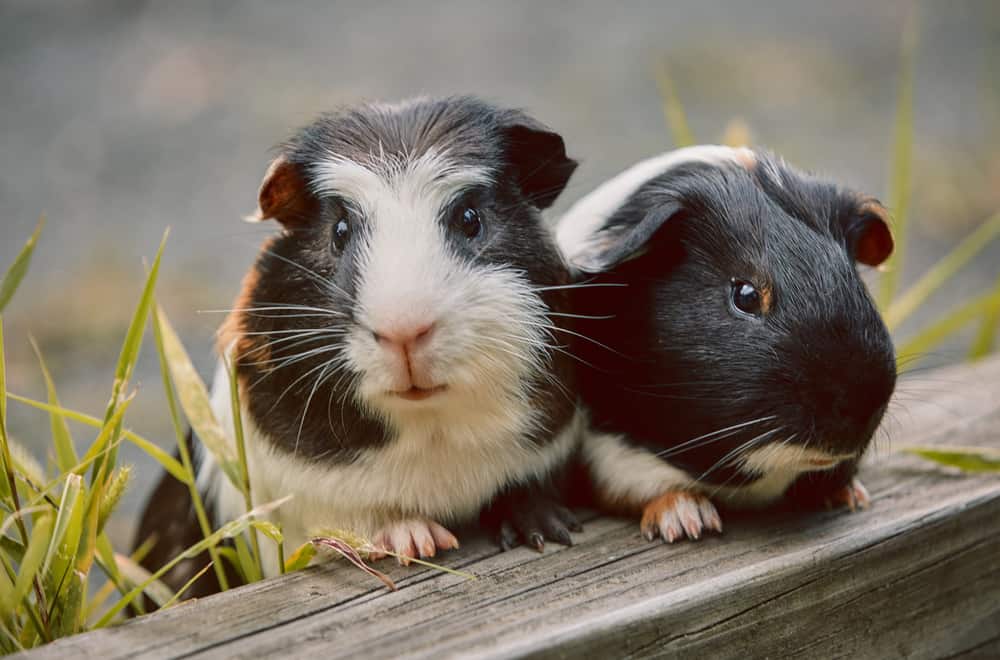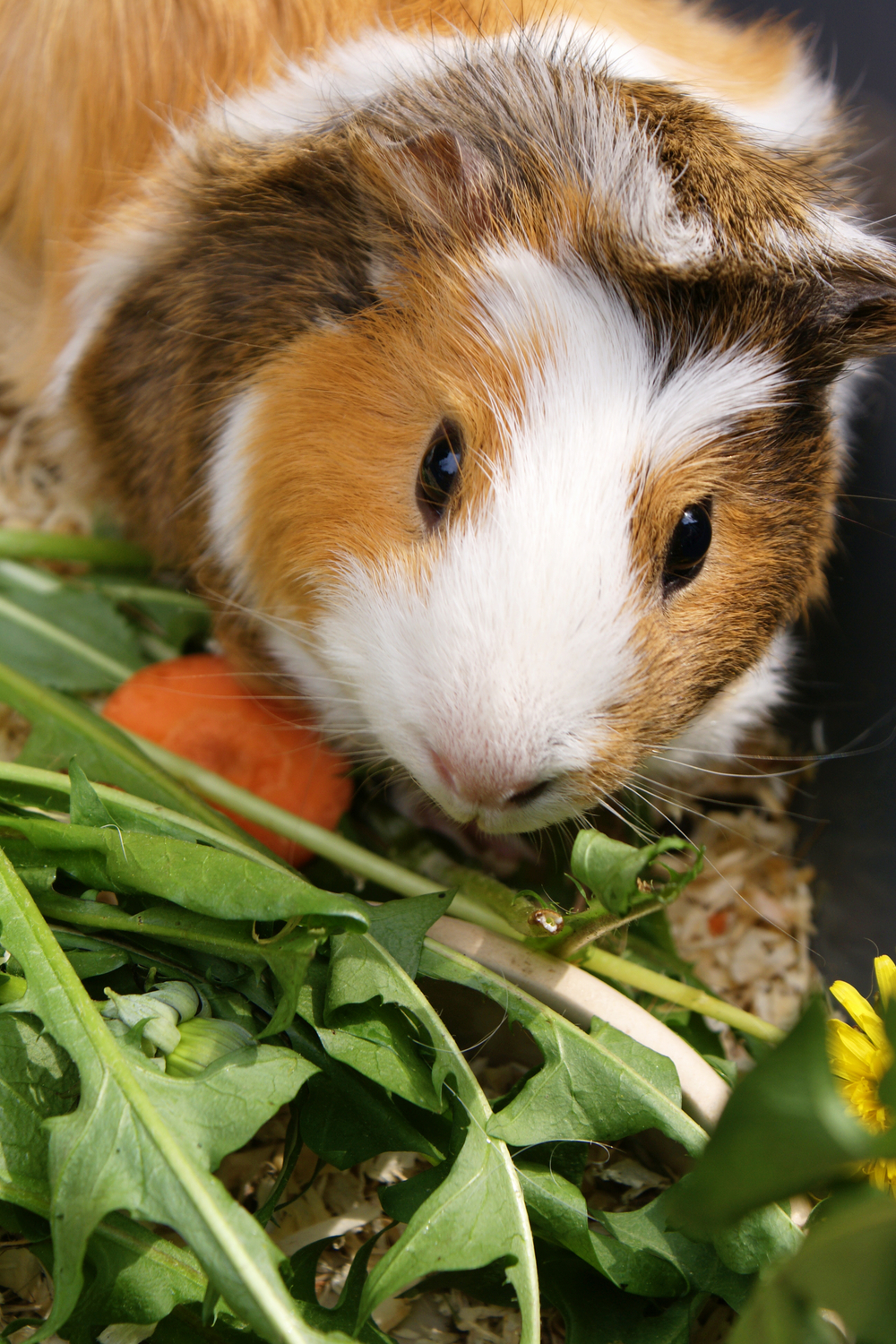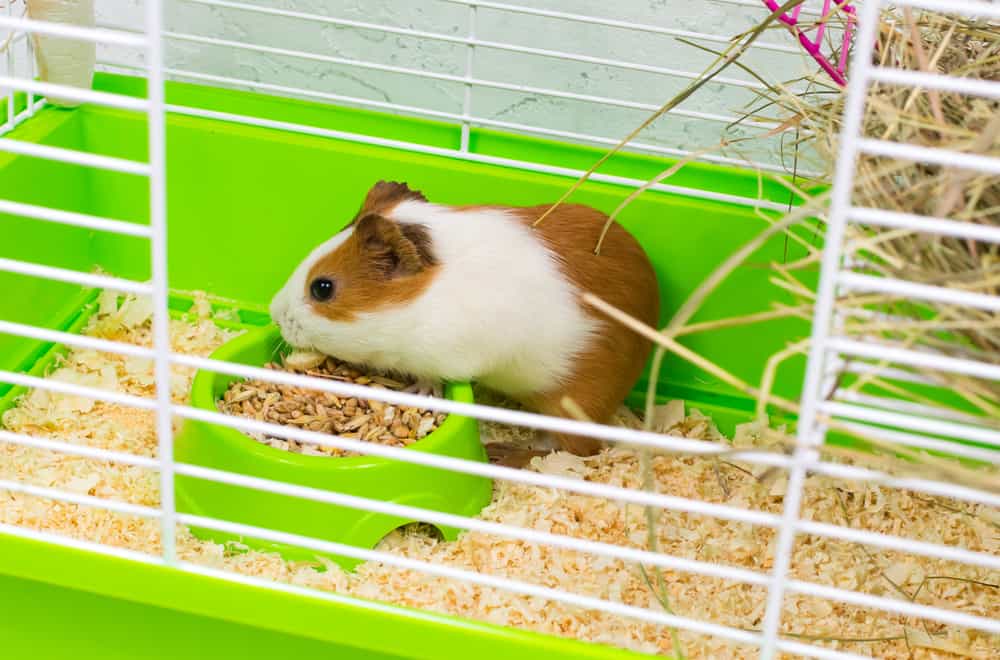Guinea pigs are herbivores that love to eat a lot and develop preferences for certain foods early on. For these reasons, any change in either type of food or its appearance can cause your pet to stop eating. So, you need to know what do Guinea pigs eat to prevent such a thing.
Guinea Pigs’ Habits and Biology
Habits
Guinea pigs originated in South America, specifically Peru, Uruguay, Brazil, and Argentina. Traders brought them to Europe during the 16th century, where they quickly became popular as pets.
They are social animals and function in groups of three to ten individuals. These groups can be different and should consist of only females or several females with one castrated male when you keep them as pets. Two males can also live together, but this combination is not quite usual.
Keep in mind that Guinea pigs are not agile animals or skilled in climbing. When they find themselves in danger, they use two opposite ways of defense, either freeze in place or flee to the shelter. On the other side, they are excellent swimmers.
Males establish dominance by biting each other’s ears, chewing fur, hitting heads, making aggressive noises, and jumping. They are very aggressive when their territory or partner is in danger.
In the wild, their natural habitat is grassy areas. Guinea pigs never dig to create their habitats but will often occupy the abandoned holes they come across. In general, these animals are most active at dusk and dawn.
Biology
The Guinea pigs’ lifespan is 4 to 5 years, but some can live up to ten years. You can expect your male pet to weigh 2 to 2.65 pounds (0.9 – 1.2 kg) on average, while the female typically weighs 1.55 to 2 pounds (0.7 – 0.9 kg).
Males are mature as soon as they turn 3 to 5 weeks old, while females reach full maturity at the 4th week of age. The Guinea pigs’ mating takes place during the night. They can breed throughout the year but peak in the spring.
Guinea pig types |
|
| Scientific classification | Guinea pig |
| Kingdom | Animalia |
| Phylum | Chordata |
| Class | Mammalia |
| Order | Rodentia |
| Family | Caviidae |
| Genus | Cavia |
| Species | Cavia Porcellus |
Pregnancy lasts from 59 to 72 days, with an average of 65 days. Childbirth occurs without notice and lasts about 30 minutes. One female typically gives birth to an average of 3 to 4 pups.
Remember that the female can become pregnant again 6 to 48 hours after giving birth. Even though an average female can become pregnant five times a year, it is not healthy.
What Do Guinea Pigs Eat In the Wild?
Guinea pigs are exclusively herbivores, and they spend most of the day searching for food. In the wild, they eat almost everything that grows on the ground, and their diet is seasonal and adapted to the environment.
The main Guinea pig’s food includes grass, various plants, and leaves. During the winter, they prefer nibbling wild fruits and vegetables. These meals are rich in vitamin C, essential for their healthy life. Since these animals ingest food with high water content, there is no need to drink water.
In the wild, Guinea pigs feed on wild plants. They learn early on which plants are good for them and recognize those that can endanger their lives. Their favorite food in the wild includes:
- Grass, flowers, and leaves
- Vegetables
- Fruits
- Branches, stems, and roots when necessary
Grass, flowers, and leaves
Thanks to a well-developed smell sense, Guinea pigs efficiently recognize beneficial and toxic plants. The grass is their favorite food, especially dandelion leaves, clover, and chickpeas.
On the other hand, some flowers are not adequate to be their meal, including buttercups and daisies. Oak and ivy leaves can even be poisonous to Guinea pigs.
Vegetables
Guinea pigs eat a lot of root vegetables in the wild that provides the necessary vitamin C and prevent scurvy. Guinea pigs mainly feed on wild vegetables but don’t be surprised to see them eating in your vegetable garden.
Fruits
These cuties can also happily consume fruit when it is available. They usually consume this food type primarily during the winter when there are no fresh grasses available. Many experts believe that fruit is not very suitable for feeding Guinea pigs due to the high sugar level.
Branches, roots, and stems
That is the food Guinea pigs eat when other options are not available. They will eat branches and stems only if it is necessary for their survival.
What Do Guinea Pigs Eat as Pets
It is crucial to ensure a balanced diet for your Guinea pig. It should consist of pellets, fresh vegetables, and hay that will provide your pet with enough vitamin C, proteins, and minerals.
Pellet
It is crucial to choose a pellet that is as natural as possible. Unfortunately, you will often find that this food is full of artificial colors and unhealthy preservatives.
The best option is to pick out pellets enriched with vitamin C. Since this vitamin decomposes in heat and light, you should store the package in a dark and cool place. Also, always check the expiration date to serve your pet only fresh products.
Pellet is rich in fiber, so you should be careful with the dosage. On average, your pet will need 1 to 2 spoons of this food a day. Otherwise, there is a possibility that it gains some extra pounds.
Hay
As much as 80% of a Guinea pig’s daily diet is hay. That is why it needs to be available to them all day. This food is an excellent source of fiber and helps your pet to digest food properly. Plus, Guinea pig teeth constantly grow, so chewing hay prevents them from overgrowing.
The hay you offer Guinea pigs should be fresh, high quality, dry, sweet-smelling, and free of mold and dust. Take care to store it in a dry and cool place.
Meadow hay Timothy is a delightful choice because it contains protein, fiber, and fat in an ideal proportion for a Guinea pig. Also, you can mix it with oats and orchards.
On the other hand, you should pick out alfalfa hay for feeding pregnant females and infants. Remember that this hay type contains too much calcium to be apposite for an adult Guinea pig.
Vegetables
It is enough to offer your Guinea pig one cup of vegetables a day. To make such a diet various, you should provide your pet with different veggies each day. The most suitable options are:
- Romaine lettuce
- Spinach and broccoli
- Parsley and kale
- Cucumber and zucchini
- Artichokes
- Carrots
- Peas
- Tomatoes
- Red and green peppers
Take care to carefully wash vegetables and remove the pesticides before offering them to your pet.
Fruit
Fruit is rich in sugar, so it is not the best option to offer it to your Guinea pig in large amounts. Occasionally, you can give it small bites of:
- Oranges
- Apples
- Strawberries and blueberries
- Melons and watermelons
- Papayas and kiwis
- Peaches
- Bananas
It is advisable to wash the fruit well before serving it to your pet.
Tips to Feed Guinea Pigs
When you have a Guinea pig as a pet, you need to provide it with the necessary conditions for a healthy and comfortable life. For example, you need to know:
- How much food is enough for a Guinea pig
- How to maintain its hygiene
- How often to feed a Guinea pig
- How to offer food to your pet properly
Food amount – It is advisable not to overdo while offering food to your pet. Hay should be available at all times, but limiting vegetables or fruits to one cup per day is necessary. The daily pellets dose is 1/8 to 1/4 cup a day.
Hygiene – Most Guinea pigs are kept at home in cages with a sawdust base. Therefore, it is necessary to clean it at least once a week and regularly replace the sawdust. Take care to wash food and water containers once a day and remove uneaten leftover food after 24 hours.
Meal frequency – There is no established rule about meal frequency for Guinea pigs. However, you can divide the daily dose of food into 3 or 4 meals, but hay and water need to be constantly available. Offer pellets, fruits, and vegetables separately.
Feeding ways – Your Guinea pig can get tired of eating the same hay. To prevent this from happening, you can enrich their meals by adding different herbs, like:
- Dandelion
- Rosemary
- Hibiscus
- Nettle leaf
- Chamomile
Always introduce the new food gradually, in smaller amounts. It is necessary to cut veggies and fruits into thin slices and smaller pieces before serving them to prevent possible health problems.
Summary
It is not difficult to learn how to feed a Guinea pig as a pet. It is crucial to introduce the new food gradually and offer small amounts until your sweetie gets used to it. If you put in an effort and research, you will quickly realize how to make it happy and satisfied.



